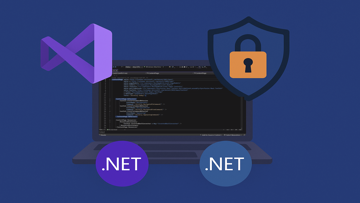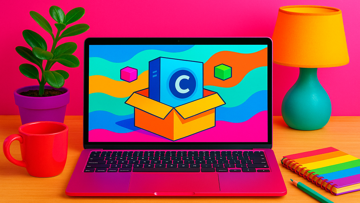PySynth
Martin C. Doege – Open SourceCreate Melodies with Ease: Review of PySynth
PySynth provides a simple yet powerful tool for beginners and hobbyists to compose and synthesize music using Python, making it accessible to those eager to explore music programming.
Introduction to PySynth
PySynth, developed by Martin C. Doege, is an innovative software application designed for beginners and experienced musicians alike. It offers a simple yet powerful platform for creating and synthesizing music, allowing users to unleash their creativity in an accessible format. This review will explore its features, usability, and potential applications, catering to those interested in music synthesis.
Key Features of PySynth
PySynth boasts a number of key features that make it a valuable tool for music enthusiasts:
- Simplicity: PySynth is designed with a user-friendly interface that allows even beginners to start creating music quickly without extensive prior knowledge.
- Multiple Synthesizer Types: The application supports various synthesizer types, including wave-based synthesis and sample playback capabilities, offering users diverse sound generation options.
- Versatile Sound Design: Users can manipulate waveforms and apply effects such as reverb, delay, and filtering, enabling detailed sound design and customization.
- Music Composition Tools: Built-in tools for music composition allow users to arrange their musical ideas easily. The application provides options for MIDI note editing and sequence management.
- Extensive File Support: PySynth supports different audio file formats for both importing and exporting compositions, making it easy to share work with others.
- Open Source: Being open-source software means that the code is available to users who wish to contribute or modify the application as per their needs.
User Interface
The user interface of PySynth is straightforward, designed with a clean layout that promotes ease of access. The main window displays various options for sound manipulation, including volume controls, waveform generators, and effect modules. This design allows users to navigate easily through the tools available while making music production a seamless experience.
Installation & Compatibility
PySynth is compatible with multiple operating systems, including Windows, macOS, and Linux. Users can download the application from its official website or through code repositories like GitHub. The installation process is simple; following straightforward prompts will facilitate getting the software up and running in no time.
Performance & Sound Quality
The performance of PySynth largely depends on the hardware it runs on. Generally, the software delivers stable performance on mid-range systems without significant glitches or latency issues. The sound quality produced is high enough for casual musicians; however, professional users may find limitations in comparison to more advanced synthesizers.
Educational Value
One of the remarkable aspects of PySynth is its educational potential. For novice musicians looking to understand basic music theory and synthesis concepts, PySynth serves as a practical tool. Its intuitive layout allows users to experiment freely with sounds while learning how different instrument parameters affect overall audio output.
Potential Applications
- Music Composition: PySynth can be used by songwriters and composers looking to draft new ideas or develop existing musical pieces.
- Sound Design: For sound designers in various fields like game development or film scoring, PySynth provides a platform to create unique soundscapes.
- MIDI Production: Users can employ PySynth for MIDI production purposes, linking it with other MIDI-compatible devices or software.
- Educational Use: Music educators may incorporate PySynth into classroom settings to teach students about synthesis and sound creation.
Learning Curve
The learning curve for PySynth is relatively gentle compared to more complex DAWs (Digital Audio Workstations) available in the market. While experienced team members may prefer advanced features found in alternatives like Ableton Live or FL Studio, beginners will appreciate PySynth's approachability. Numerous online resources are available to aid new users in becoming familiar with the software's capabilities.
User Community & Support
An active user community supports PySynth. Users can interact through forums where they share tips, tutorials, and personal experiences with the software. Additionally, since PySynth is open-source, there are opportunities for collaboration among developers interested in enhancing its features or troubleshooting problems.
Limitations
No software is without limitations; recognizing them is essential for making informed decisions about its use:
- Lack of Advanced Features: Advanced users may find that PySynth lacks some features found in high-end synthesizers or DAWs.
- Simplistic Interface: While its simplicity benefits beginners, some users might find it unchallenging after gaining experience.
- Slight Performance Issues: Depending on system specifications, users may occasionally experience performance hiccups during intensive sessions.
PySynth emerges as an accessible entry point into the world of music synthesis and composition. Its straightforward interface and robust feature set cater to a wide range of users—from curious beginners wanting to explore sound creation to seasoned enthusiasts seeking simplicity in their work process. While it does have limitations against more advanced software options, its educational value and ease of use make it an excellent choice for those at the beginning of their musical journey.
Overview
PySynth is a Open Source software in the category Miscellaneous developed by Martin C. Doege.
The latest version of PySynth is currently unknown. It was initially added to our database on 10/16/2009.
PySynth runs on the following operating systems: Windows.
PySynth has not been rated by our users yet.
Pros
- Lightweight and easy to use for beginners.
- Allows for quick musical experimentation without complex setup.
- Supports various audio formats for output.
- Written in Python, making it accessible for those familiar with coding.
- Encourages creativity by allowing users to generate sounds and music programmatically.
Cons
- Limited functionality compared to more advanced digital audio workstations (DAWs).
- Lacks a robust user community for support and resources.
- No graphical interface, which may deter users who prefer visual tools.
- Performance can be influenced by the user's programming skills rather than just musical talent.
- Fewer built-in sound libraries compared to other software options.
FAQ
What is PySynth?
PySynth is a simple Python script for music composition using simple text files.
How is PySynth used for music composition?
Users can create melody and accompaniment tracks by providing text-based instructions to PySynth.
What type of music can be created with PySynth?
PySynth can be used to create various genres of music including classical, electronic, or experimental.
Is PySynth suitable for beginners?
Yes, PySynth is designed to be user-friendly and accessible for those new to music composition.
Can PySynth be integrated with other music software?
Yes, PySynth output can be converted to MIDI format for further editing in digital audio workstations.
Is PySynth open source?
Yes, PySynth is released under the GNU General Public License (GPL) and its source code is available for modification.
Are there any limitations to PySynth's capabilities?
PySynth may have limitations in complex rhythm patterns and detailed orchestration compared to more advanced music software.
Does PySynth support multi-track composition?
Yes, PySynth supports the creation of multiple tracks allowing users to layer different instruments and melodies.
Can users customize the sound output of PySynth?
Users can modify the parameters in the text files to adjust the tone, duration, and other aspects of the generated music.
Is there any documentation available for using PySynth?
Yes, there is documentation available that covers the usage and parameters supported by PySynth for music composition.
Minh Ong
I'm Minh, a software engineer and author with a passion for exploring and writing about the latest in software and technology. With my experience in software development and a specialization in software updates and content creation, I bring a deep understanding of the tech landscape to my reviews and articles. My focus is on providing you with comprehensive insights into general software topics and the latest industry news.
Latest Reviews by Minh Ong
Latest Updates
Freeciv 3.1.5
Freeciv: The Classic Turn-Based Strategy Game ReimaginedSoda PDF 14.0.509.23030
Soda PDF: Transform and edit your PDF files with ease!PureSync 8.0.0
Keep Your Files in Perfect Sync with PureSync!Take Command 35.0.15
Power Up Your Command Line with Take CommandFrostWire 6.14.0
Free and Feature-Packed File Sharing Software with a Built-In Media Player!Latest News
Latest Reviews
|
Music Player & MP3 Player App
Lutech's Music Player: A Harmonious Experience |
|
|
Prado Suv Jeep Driving Games
Experience the Thrill of Off-Road Driving with Prado SUV Jeep Driving Games |
|
|
Motocross Wallpaper
Rev Up Your Device with Motocross Wallpaper! |
|
|
Fasset - Buy Digital Assets
Fasset: Your Gateway to Digital Asset Investment |
|
|
Farm Mania 3: Fun Vacation
Step into Farming Paradise with Farm Mania 3: Fun Vacation! |
|
|
Como recuperar contactos
Recupera tus contactos perdidos con facilidad |
|
UpdateStar Premium Edition
Keeping Your Software Updated Has Never Been Easier with UpdateStar Premium Edition! |
|
|
Microsoft Visual C++ 2015 Redistributable Package
Boost your system performance with Microsoft Visual C++ 2015 Redistributable Package! |
|
|
Microsoft Edge
A New Standard in Web Browsing |
|
|
Google Chrome
Fast and Versatile Web Browser |
|
|
Microsoft Visual C++ 2010 Redistributable
Essential Component for Running Visual C++ Applications |
|
|
Microsoft Update Health Tools
Microsoft Update Health Tools: Ensure Your System is Always Up-to-Date! |





